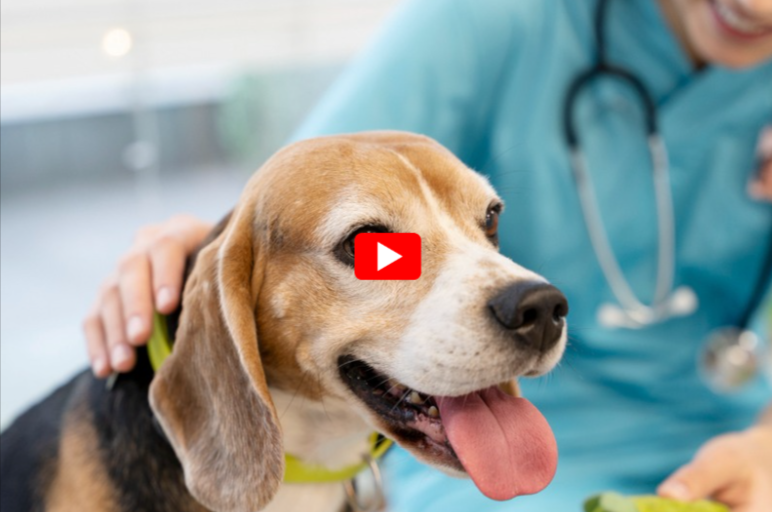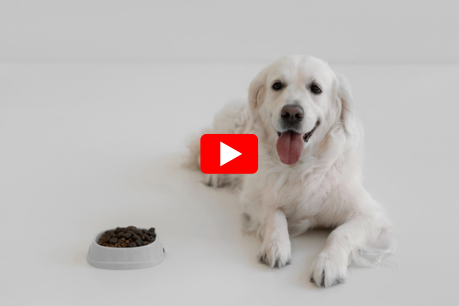How To Stop Seizures In Dogs Immediately: Safe, Quick Tips!
Seizures in dogs can be terrifying both for your pet and for you as their caregiver. Watching your beloved companion go through an episode of uncontrollable movements, muscle spasms, or loss of consciousness is an overwhelming experience.
While it’s essential to consult a veterinarian for a definitive diagnosis and long-term management, knowing how to handle a dog seizure immediately can make a critical difference in your pet’s safety.
To stop seizures in dogs immediately, stay calm, keep your pet safe, avoid restraining them, time the seizure, and seek emergency veterinary care quickly.
This comprehensive guide covers what causes seizures in dogs, how to recognize them, what to do during and immediately after a seizure, and how to safeguard your pet’s environment to prevent further harm.
What Are Seizures in Dogs?
A seizure, also known as a convulsion or fit, is a sudden, uncontrolled burst of electrical activity in the brain.
This abnormal brain activity leads to physical symptoms such as twitching, muscle spasms, jerking, drooling, or unconsciousness. Seizures are one of the most common neurological problems in dogs.
According to WebMD for Pets, seizures can occur as isolated incidents or in clusters and may last from a few seconds to several minutes.
Some dogs may have a single seizure in their lifetime, while others might experience recurring episodes.
Common Causes of Seizures in Dogs
Understanding the underlying reasons for seizures is crucial for immediate response and long-term care. Some of the most common causes include:
- Idiopathic Epilepsy: The most frequent cause, often inherited and with no identifiable reason.
- Brain Tumors: Especially in older dogs.
- Liver or Kidney Disease: Can result in toxin buildup, triggering seizures.
- Head Trauma
- Hypoglycemia (Low Blood Sugar): Common in small breeds and diabetic dogs.
- Heatstroke
- Toxic Exposure: Including pesticides, chocolate, xylitol, or certain human medications.
- Infectious Diseases: Like canine distemper.
- Stroke
A veterinarian will typically run a series of tests (bloodwork, imaging, or spinal tap) to determine the cause and decide on a treatment plan.
Signs of an Impending Seizure in Dogs
Recognizing the early signs of a seizure (the “pre-ictal” or aura stage) allows you to prepare and reduce potential harm. Signs include:
- Sudden anxiety or restlessness
- Whining or seeking attention
- Staring blankly or appearing confused
- Excessive drooling
- Muscle twitching
- Hiding or clingy behavior
Once you notice these signs, you can ready yourself to act immediately.
How To Stop Seizures In Dogs Immediately: Step-By-Step
Stay Calm
Your dog can sense your anxiety. Stay calm to avoid escalating their stress levels, which may worsen the seizure.
Ensure a Safe Environment
Move any furniture, sharp objects, or potentially dangerous items out of the way. If your dog is near stairs or water, carefully reposition them to a safe, flat area without restraining them.
Avoid Touching Their Mouth
Despite old myths, do not attempt to put anything in your dog’s mouth. They will not swallow their tongue during a seizure, and you risk being bitten accidentally.
Time the Seizure
Use a timer or phone to track the seizure’s duration. Most seizures last 30 seconds to 2 minutes. If it extends beyond 5 minutes, it’s a medical emergency (status epilepticus).
Dim Lights and Reduce Noise
Seizures can be aggravated by sensory stimulation. Lower room lights, turn off loud noises, and maintain a calm environment.
Do Not Restrain Your Dog
Let the seizure run its course unless your dog is in immediate danger. Restraining them may cause injury.
After the Seizure (Post-Ictal Phase)
Once the seizure stops:
- Speak softly and gently.
- Offer water.
- Allow your dog to rest.
- Monitor for abnormal behaviors like pacing, confusion, or temporary blindness.
If it was your dog’s first seizure or if they have multiple episodes in a short time, consult a veterinarian immediately.
When To Seek Emergency Care
Some seizures require immediate veterinary attention. Seek emergency help if:
- The seizure lasts longer than 5 minutes.
- Your dog has multiple seizures in 24 hours.
- Your dog does not regain consciousness.
- There’s difficulty breathing, pale or blue gums, or signs of injury.
Contact an animal emergency clinic or your regular vet without delay.
Natural Home Care Measures (Between Seizures)
While you can’t usually stop a seizure once it starts, several at-home measures can help reduce seizure frequency:
- Maintain a Regular Feeding Schedule: Avoid low blood sugar triggers.
- Limit Environmental Stress: Provide a calm, consistent routine.
- Avoid Toxins: Keep human medications, chocolate, grapes, and toxic plants out of reach.
- Hydration: Keep fresh water available at all times.
However, these are supportive measures — they do not replace veterinary care.
Long-Term Management Options
After an episode, your veterinarian might recommend:
- Anticonvulsant Medications (e.g., phenobarbital, potassium bromide)
- Diagnostic Tests: MRI, CT scans, or bloodwork.
- Dietary Adjustments
- Regular Monitoring
Following your vet’s guidance is key to your dog’s quality of life.
Preventing Future Seizures: Pet Parent Tips
Although not all seizures are preventable, here are precautions you can take:
- Avoid known triggers like flickering lights, intense play, or toxic foods.
- Keep a Seizure Diary: Track episodes, duration, and possible triggers.
- Ensure Routine Vet Checkups
- Monitor for Toxin Exposure
What Not To Do During A Dog Seizure
- Don’t panic.
- Don’t restrain your dog.
- Don’t give food, water, or medications during a seizure.
- Don’t delay medical care for seizures lasting over 5 minutes.
Final Thoughts
Seizures in dogs are frightening but manageable if you know how to respond quickly and safely.
The first step is understanding what’s happening, remaining calm, ensuring your dog’s safety, and consulting your veterinarian for follow-up care.
By preparing yourself with knowledge and a plan, you can protect your pet and help them recover smoothly after a seizure.
References Link
- Dog Seizure Disorders
https://www.webmd.com/pets/dogs/dog-seizure-disorders
- Seizures in Dogs
https://www.petmd.com/dog/symptoms/seizures-in-dogs
- Seizures – Symptoms and causes
https://www.mayoclinic.org/diseases-conditions/seizure/symptoms-causes/syc-20365711
.



